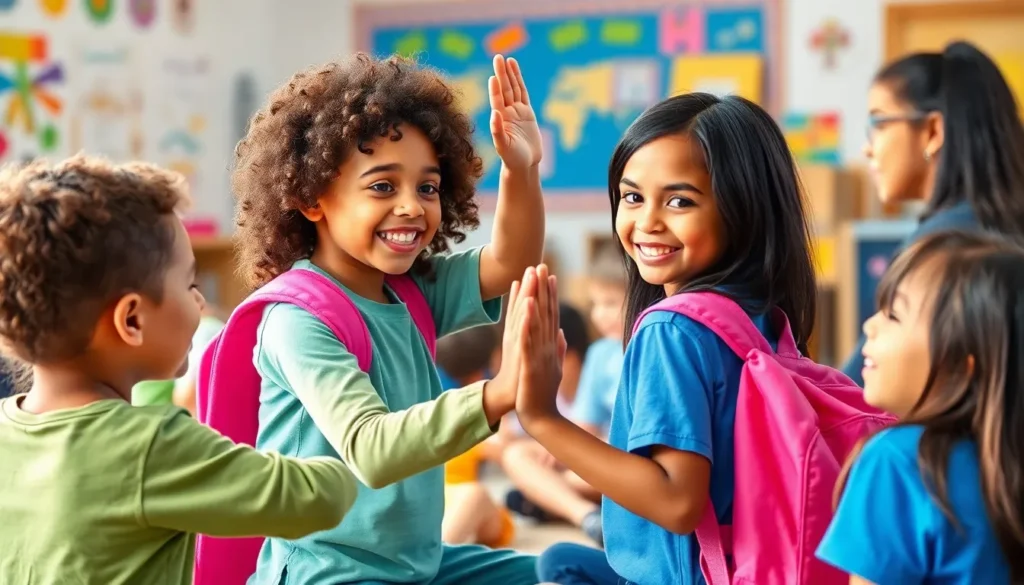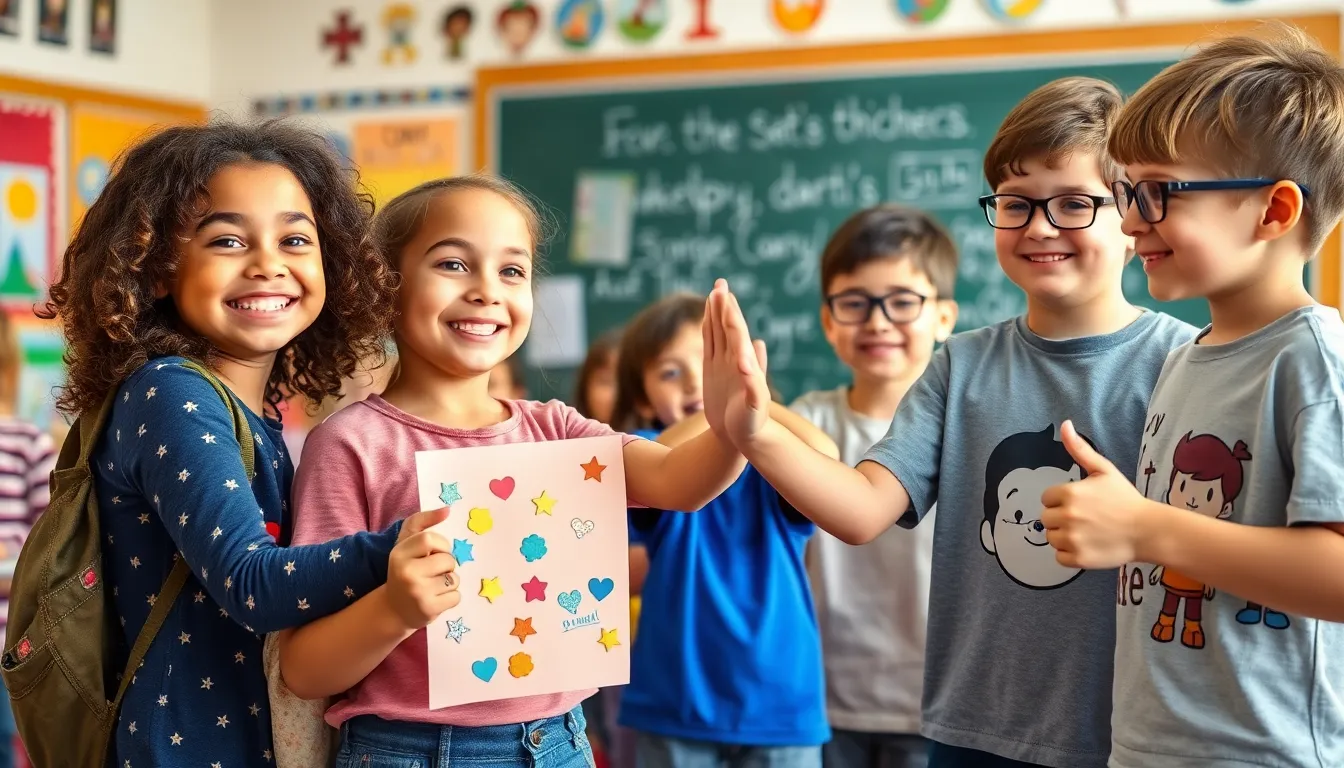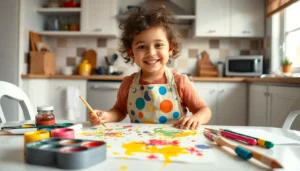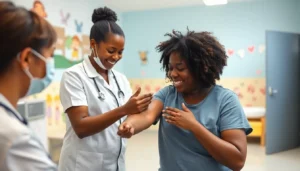Table of Contents
ToggleEvery classroom has its own unique rhythm, but what happens when the final bell rings? Goodbye rituals can turn that chaotic dash for the door into a memorable moment. These little traditions not only create a sense of closure but also help students reflect on their day while giggling over the antics of their classmates.
Importance Of Goodbye Rituals In Class
Goodbye rituals in classrooms create essential moments that foster emotional connections among students. These practices allow students to reflect on their day, promoting a sense of closure that benefits their emotional well-being. Sharing experiences during these rituals encourages camaraderie, strengthening relationships and enhancing the classroom environment.
Encouraging students to express their thoughts or feelings during goodbye rituals facilitates communication skills. Engaging in these discussions helps them articulate their experiences, making room for personal growth. Teachers often observe that students become more invested in their classroom community through these meaningful exchanges.
Goodbye rituals also serve as a bridge to transition from the structured environment of school to the more relaxed setting of home. A smooth transition reduces anxiety and prepares students for the events awaiting them outside of school. Moreover, these routines can establish a sense of anticipation for the next class, instilling excitement for learning.
Incorporating creativity into goodbye rituals—such as storytelling, music, or creative expression—makes these moments memorable. Such creative activities stimulate imagination while reinforcing the bond between peers. The impact of goodbye rituals extends beyond individual classrooms; they contribute to a positive school culture, encouraging harmony and inclusivity.
Ultimately, goodbye rituals equip students with valuable social and emotional skills. Strengthening relationships and promoting reflection encourage emotional intelligence, an essential component of personal development. Prioritizing goodbye rituals represents a commitment to creating a supportive learning environment where every student feels valued.
Types Of Goodbye Rituals
Goodbye rituals vary across classrooms, enhancing the emotional climate of the school day. Understanding different types of rituals can help educators create meaningful experiences for their students.
Traditional Goodbye Rituals
Traditional goodbye rituals often include simple yet effective practices such as circle time sharing. Students express their favorite moments from the day, encouraging reflection. Another method involves a group song to unify the class and create a warm atmosphere. Additionally, high-fives or personalized tokens foster connections, reinforcing friendships among students. These rituals establish consistency, allowing students to transition smoothly from classroom to home.
Modern Goodbye Rituals
Modern goodbye rituals incorporate technology and creative elements. Digital platforms can host virtual farewell chats, making the experience engaging for tech-savvy students. Storytelling sessions enable students to share their experiences in imaginative ways. Art projects allow students to create visual memories, providing a lasting keepsake. Using mindfulness practices, such as quick relaxation techniques, helps reduce anxiety. These contemporary approaches not only resonate with today’s learners but also contribute to an inclusive classroom environment.
Benefits Of Implementing Goodbye Rituals
Goodbye rituals offer numerous benefits for students in the classroom environment. They promote emotional well-being and foster community.
Emotional Well-Being
Students experience enhanced emotional well-being through goodbye rituals. These practices provide a structured way for individuals to express feelings and reflect on their day. Comfort is gained by knowing there’s a reliable routine that signals the transition from school to home. Anxiety diminishes as students engage in familiar activities like sharing highlights or participating in group songs. Effective emotional regulation occurs when students articulate their feelings, leading to a more positive overall experience. Research indicates that such rituals contribute to resilience, increasing students’ ability to cope with school challenges.
Community Building
Goodbye rituals facilitate community building within the classroom. They create opportunities for students to connect on a personal level, strengthening peer relationships. Engaging in shared activities fosters a sense of belonging among classmates. Rituals like high-fives and group affirmations promote positive interactions that reinforce teamwork. The inclusive atmosphere encourages every student to participate, enhancing empathy and social skills. Additionally, these experiences help to cultivate a safe environment where voices and opinions are valued. Through collective experiences, students develop a supportive community that nurtures growth and collaboration.
Challenges In Practicing Goodbye Rituals
Implementing goodbye rituals presents challenges that educators face in the classroom. Time constraints often limit teachers’ ability to incorporate these practices daily. Class schedules packed with lessons and activities leave little room for additional rituals, which can be vital for closure.
Some students may feel uncomfortable expressing their emotions during goodbye moments. Individual differences in emotional expression can create challenges in participation. While some embrace rituals wholeheartedly, others may withdraw, impacting the overall experience.
Behavior management issues can also disrupt these rituals. Students not engaging positively can lead to distractions, making it difficult to maintain the intended atmosphere. Educators must balance fostering inclusivity while managing these behaviors effectively.
Cultural differences among students present another hurdle. Diverse backgrounds influence how students perceive and engage with goodbye rituals. Teachers must understand these nuances to cultivate inclusive practices that resonate with everyone.
Educators may also lack adequate training or resources to facilitate effective goodbye rituals. Professional development opportunities focusing on emotional learning can help bridge this gap. Without proper preparation, implementing rituals might not achieve the desired emotional impact.
Finally, resistance from parents or guardians can hinder ritual practice. Some families may not see the value in these activities, leading to potential pushback. Educating the school community on the benefits of goodbye rituals can foster broader support and participation.
Conclusion
Goodbye rituals play a crucial role in creating a supportive classroom environment. They not only help students transition smoothly from school to home but also foster emotional connections and community among peers. By incorporating both traditional and modern practices, educators can enhance the emotional climate of their classrooms.
Despite the challenges that may arise, the benefits of implementing these rituals far outweigh the difficulties. With creativity and understanding, goodbye rituals can become a cherished part of the school day, leaving students feeling valued and connected. Embracing these practices ultimately contributes to a positive school culture where every student can thrive.








